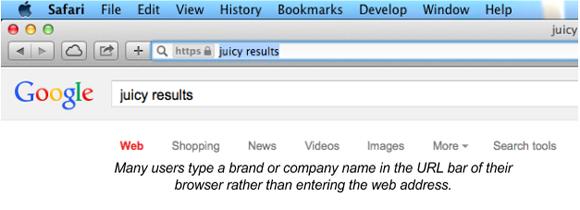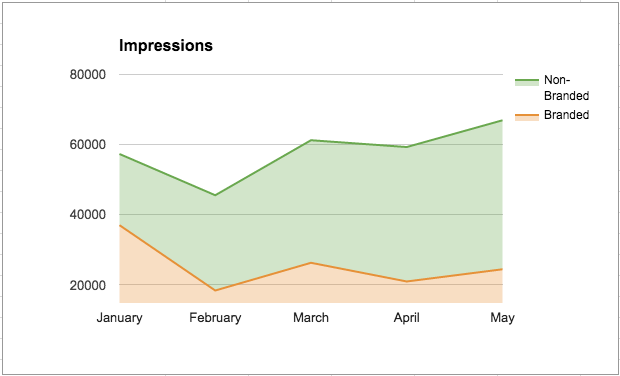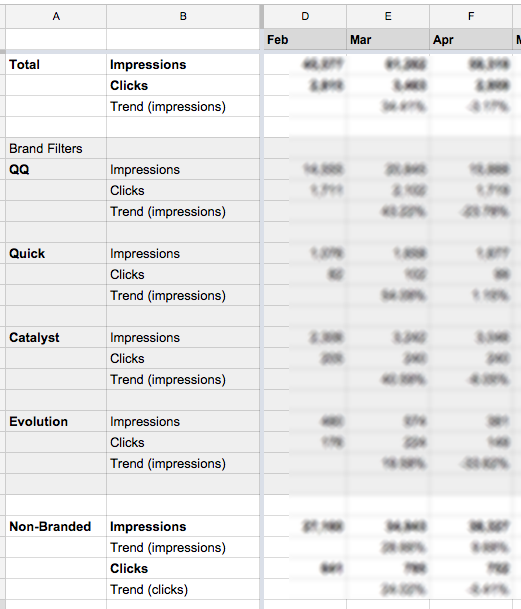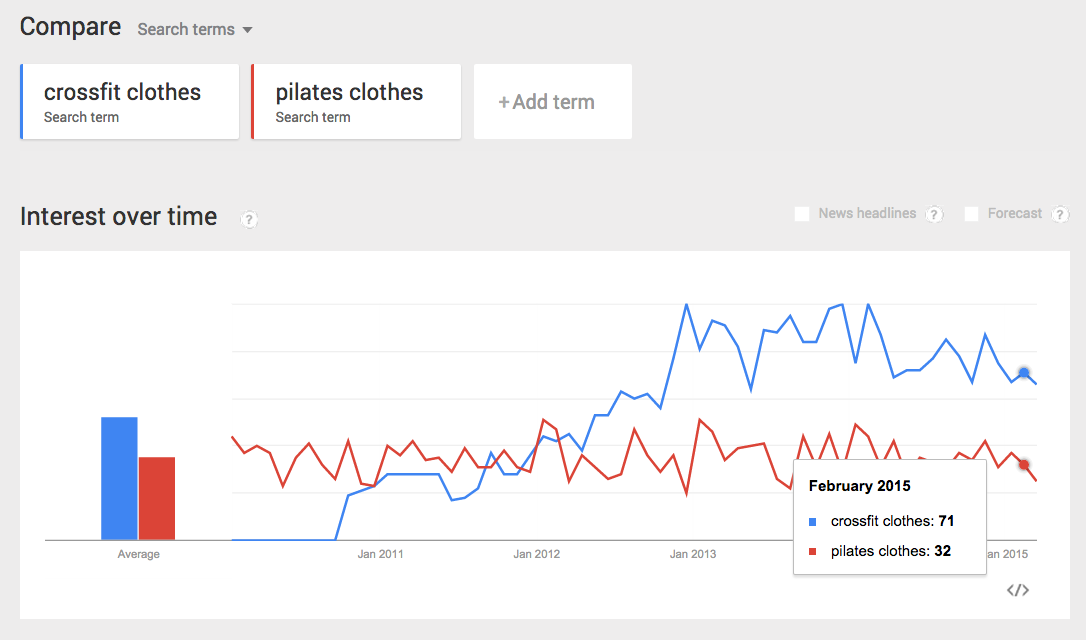The Top Mistake Companies Make When Measuring SEO
There is a HUGE mistake I see almost everyone make when they are managing and measuring their SEO efforts. It’s obvious in hindsight, but until someone points it out, I can’t fault anyone for making it, as I committed this mistake for years.
The reason this fallacy is so damaging is that it causes us to make decisions on the wrong data. It’s a lot like leaving your snowboots at home on a 40-degree day.
Based on what we learn in school about water freezing, it is logical to assume that it cannot snow if the outside temperature is above 32 fahrenheit. As a lifelong Floridian, I can assure you that there is a significant portion of us who hold that assumption.  Imagine our surprise when we get hail in the summer—it happens almost every year. Most of you northern readers know that snow and hail form far above the earth, where temperatures can be dramatically lower than surface temperatures. Until you experience a summer hail storm, you may never challenge your assumption that it won’t snow on a day with a high of 45.
Imagine our surprise when we get hail in the summer—it happens almost every year. Most of you northern readers know that snow and hail form far above the earth, where temperatures can be dramatically lower than surface temperatures. Until you experience a summer hail storm, you may never challenge your assumption that it won’t snow on a day with a high of 45.
Many of us hold a similar assumption that Google Analytics is the best way to measure a website’s SEO traffic, and it is equally wrong. You see, the number of visits from search engines that Google Analytics provides is technically correct, but it’s not what you think it is. Let me start by illustrating how we use browsers on our phones, tablets and PCs today (2015).
The Dirty Search Secret Nobody Tells You About
Do you remember the website address (URL) for every website you visit? Of course not. Most users simply enter a company or brand name right into the URL bar of their browser.

The result is a Google search result page (or whatever your default search engine is). When you click through to that website, website tracking tools (such as Google Analytics) count that as a search engine referral.
Is that the type of visit you had in mind when you began your SEO initiative? I bet not.
Most of us set out to win traffic for descriptor keywords like “website designers” or “best pet-friendly hotels in south beach.” Those are the types of referrals we have in mind when we view a report of our search engine traffic. But, the overwhelming majority of traffic being counted by both novices and expert SEOs is branded traffic—defined as clickthroughs for searches based on your brand names.
Now, I am not saying that traffic from your brand names is a bad thing. I just believe that is more likely the result of your other marketing, not your SEO efforts.
So, let’s talk about how to isolate that traffic and get a real handle on your search visibility.
The Right Way to Measure Your SEO Efforts
At this point, you probably recognize that you need to separate branded search from keyword search traffic to more accurately assess your SEO footprint. It is this traffic from keyword searches that we are typically after when we engage in SEO.
The best way I know to extract this data is through Google’s Search Console (formerly Webmaster Tools). Bing also offers a similar tool, but we are going to stick with Google for the purpose of this article. Once you set up Search Console for your website, you will be able to view both the clicks and impressions your website receives each day by keyword (for the last four months).
Since Google Search Console only presents the last four months of data, we’re going to set up a spreadsheet we can use to store some key metrics. At Juicy Results, we call this spreadsheet our Search Visibility Report, because your overall search visibility is what we are ultimately tracking. This report simply allows us to isolate trends in branded search vs keyword search impressions and traffic.
In this spreadsheet, we need to identify the branded search terms that we want to filter. These are most likely your company, product and key executive names. I suggest starting by going through your search query report in Search Console (it will show you what keywords you are already receiving impressions for) and take note of the search terms you consider branded—meaning that the searcher already knew who you were and would have found you regardless.
Examples of Branded Search Terms:
- Company Name
- Product Names
- Slogans or Branded Terms
- Key Principal or Executive Names
- Stock Symbol
Once you have this list, you want to convert the names to the simplest search term used. For example, if your full company name is “Juicy Results,” you can assume that all branded company search terms will include the string “juicy.” If I wanted to filter out my own name, I would use the filter of “jeremy” since all instances of “jeremy pound” will include that. This helps account for spacing issues and some misspelling or abbreviations. The goal is to catch as many derivatives of each brand name with the simplest string possible. Use “acme” rather than “acme commercial services.”
Someone will need to be assigned to transfer the numbers from Search Console to this spreadsheet each month. And, once you have a few months of data in the spreadsheet, you can begin to chart the data and see some interesting comparisons of how your keyword search traffic is growing (or not) and how searches for your brand names rise and fall. Now, you will be seeing the true picture of your search visibility and be able to make better decisions about your SEO efforts.

What You Can Learn From This Report
Measuring Search Visibility
Over time, if you are increasing your ranking positions and winning rankings for new keywords, you would expect your impressions to begin increasing as well. Impressions can be a leading indicator for clicks to come. While some months may fluctuate (due to shorter months, seasonal differences in your market or shuffles in Google’s search algorithms) you are looking for a positive trend upwards.
For many companies, search impressions for their company and product names (branded search terms) are a considerable percentage of their overall search visibility. If your company name accounts for 25% of your search impressions and you launch a new advertising campaign or receive significant media coverage, you might see a huge spike in your search impressions and clicks. On the other hand, if you pause a consistent advertising campaign or discontinue some other marketing activity such as tradeshows or providing a column to a trade journal, you would expect a drop off in search impressions for your company name.
Either of these events could cause you to falsely believe that your SEO efforts are moving in a certain direction. By isolating branded search impressions and clicks, you have a more accurate indication of your search visibility, and I believe this is a critical report for gauging your SEO efforts.
Fluctuations in Search Demand
For websites that have been successful with SEO and receive consistent search traffic, there is another insight that can be gleaned from this report. For some keywords, there are seasonal changes, sudden bursts in demand, or a gradual fade in demand as an industry wanes. From experience, it can be challenging to account for a decrease in overall website traffic while your rankings simultaneously surge. Or, sometimes traffic and sales take off, but your rankings have been idle. When your ranking changes are out of rhythm with your search visibility, this report and Google Webmaster Tools allow you to spot other trends.
Focus on the keywords that are bringing you the most significant impressions and clicks. Then, chart those over the last four months. If you begin to think that a specific keyword is moving in one direction, you can use Google Trends to prove that theory. If you find that the keyword you are interested is not tracked by Google Trends, then you can plot the WMT data on a spreadsheet and track the volume on your own over time.
In the screenshot example above, you might expect your search visibility for terms related to crossfit clothes to increase, even if your rankings for those terms stay fixed because of the growing interest in that area.
Changes in Brand Demand
As mentioned previously, searches for your brand names are important, I just want to stress that they should be isolated from your non-brand search visibility metrics because it not SEO—but your other marketing—that has the most impact on this search traffic. Most brands already rank very high, if not not number one, for their company and product names. If yours does not, make sure to see the Page One Domination chapter in section three.
Sharing the data in the branded rows of your search visibility tracking report with others responsible for marketing at your company can be extremely useful in assessing the trends in your overall brand popularity. Find a huge bump in brand searches? See if you can tie that to a marketing event. Seeing a steady decline? Try to identify anything that you have stopped doing that might have been successful.
. . .
This blog post was adapted from The Bootstrapper’s Guide to SEO. For more info on how we use the Search Visibility Report, see our Guaranteed SEO service.









